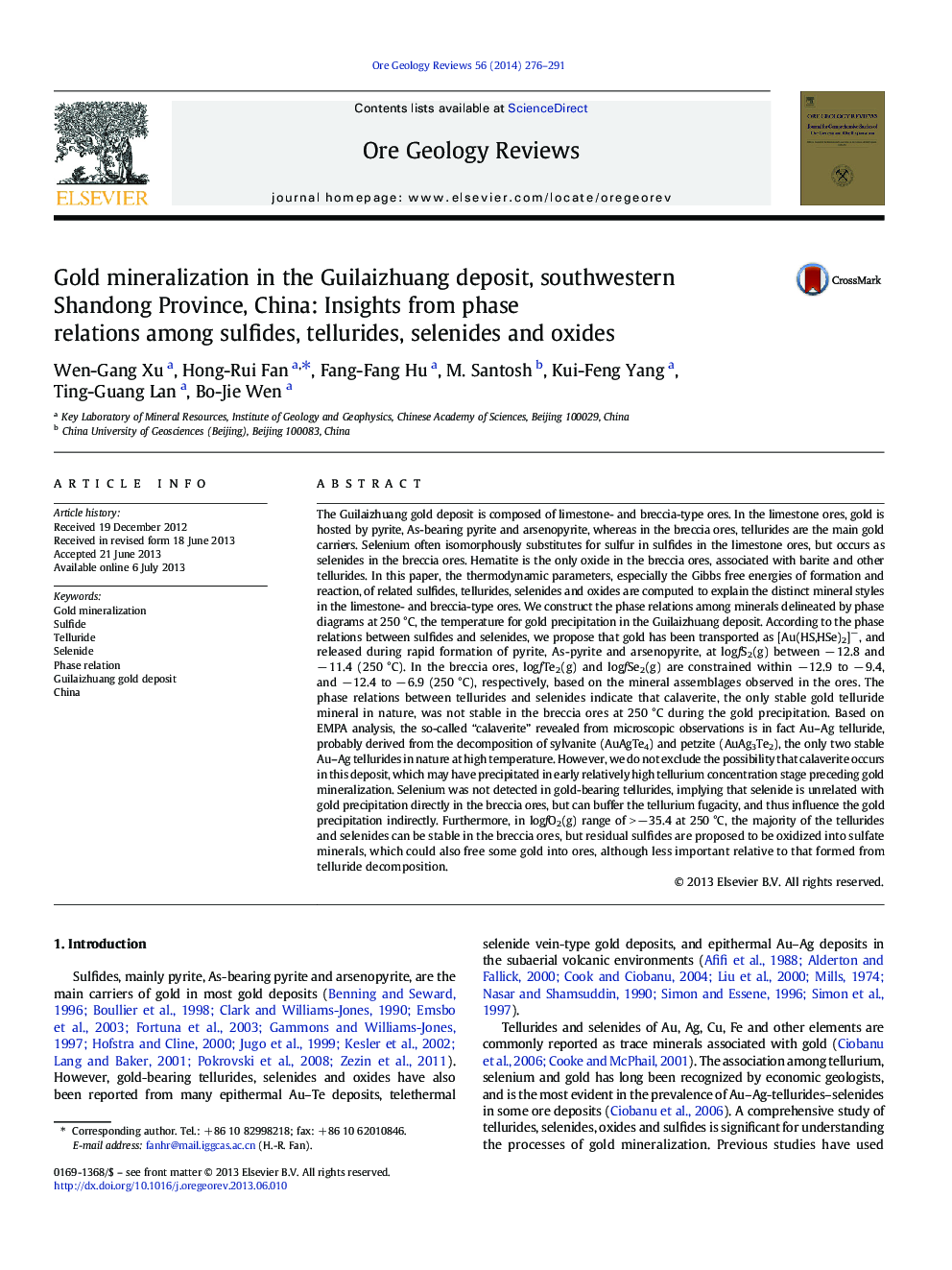| Article ID | Journal | Published Year | Pages | File Type |
|---|---|---|---|---|
| 4697434 | Ore Geology Reviews | 2014 | 16 Pages |
•Gold-bearing sulfides and tellurides were identified and analyzed using EMPA.•Phase relations among sulfides, tellurides, selenides, and oxides were constructed.•The fugacity ranges of S2(g), Te2(g), Se2(g), and O2(g) were constrained.•The gold precipitation differences between sulfide and telluride were interpreted.
The Guilaizhuang gold deposit is composed of limestone- and breccia-type ores. In the limestone ores, gold is hosted by pyrite, As-bearing pyrite and arsenopyrite, whereas in the breccia ores, tellurides are the main gold carriers. Selenium often isomorphously substitutes for sulfur in sulfides in the limestone ores, but occurs as selenides in the breccia ores. Hematite is the only oxide in the breccia ores, associated with barite and other tellurides. In this paper, the thermodynamic parameters, especially the Gibbs free energies of formation and reaction, of related sulfides, tellurides, selenides and oxides are computed to explain the distinct mineral styles in the limestone- and breccia-type ores. We construct the phase relations among minerals delineated by phase diagrams at 250 °C, the temperature for gold precipitation in the Guilaizhuang deposit. According to the phase relations between sulfides and selenides, we propose that gold has been transported as [Au(HS,HSe)2]−, and released during rapid formation of pyrite, As-pyrite and arsenopyrite, at logfS2(g) between − 12.8 and − 11.4 (250 °C). In the breccia ores, logfTe2(g) and logfSe2(g) are constrained within − 12.9 to − 9.4, and − 12.4 to − 6.9 (250 °C), respectively, based on the mineral assemblages observed in the ores. The phase relations between tellurides and selenides indicate that calaverite, the only stable gold telluride mineral in nature, was not stable in the breccia ores at 250 °C during the gold precipitation. Based on EMPA analysis, the so-called “calaverite” revealed from microscopic observations is in fact Au–Ag telluride, probably derived from the decomposition of sylvanite (AuAgTe4) and petzite (AuAg3Te2), the only two stable Au–Ag tellurides in nature at high temperature. However, we do not exclude the possibility that calaverite occurs in this deposit, which may have precipitated in early relatively high tellurium concentration stage preceding gold mineralization. Selenium was not detected in gold-bearing tellurides, implying that selenide is unrelated with gold precipitation directly in the breccia ores, but can buffer the tellurium fugacity, and thus influence the gold precipitation indirectly. Furthermore, in logfO2(g) range of > − 35.4 at 250 °C, the majority of the tellurides and selenides can be stable in the breccia ores, but residual sulfides are proposed to be oxidized into sulfate minerals, which could also free some gold into ores, although less important relative to that formed from telluride decomposition.
